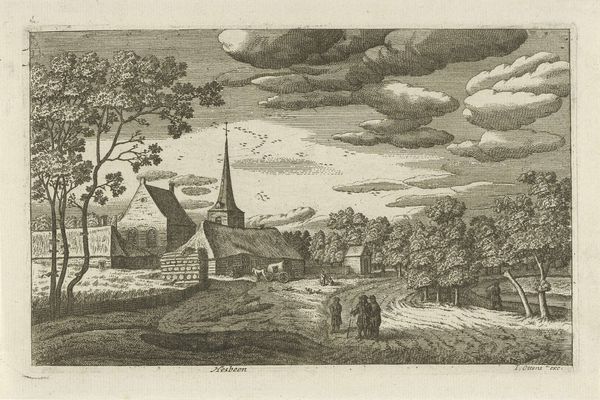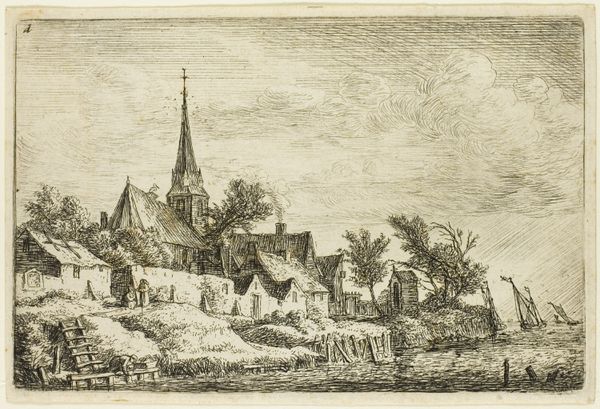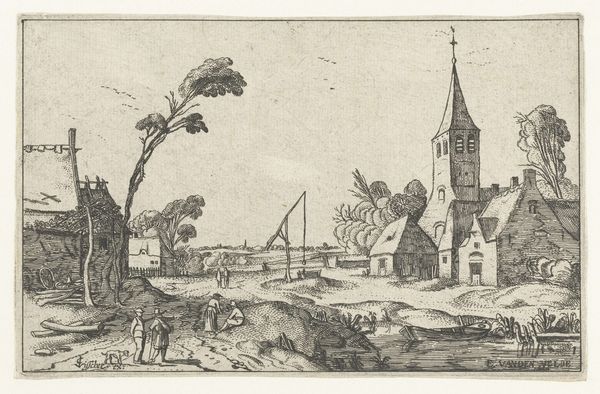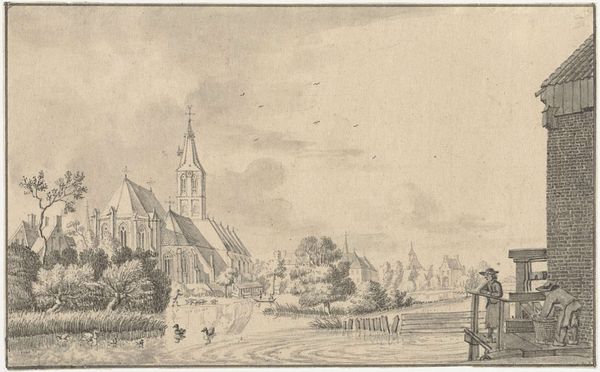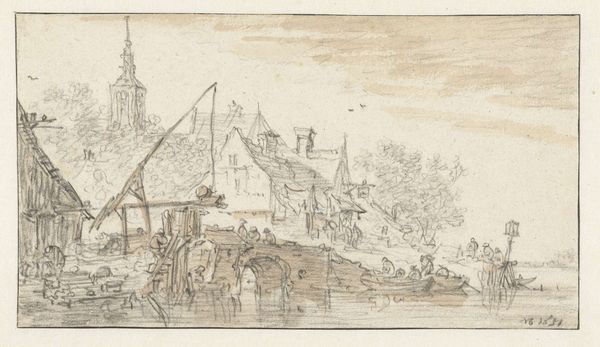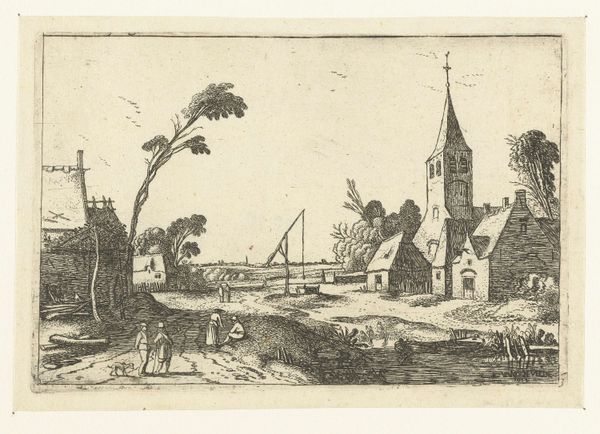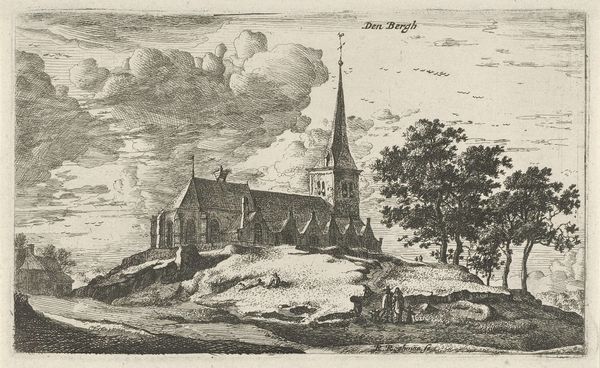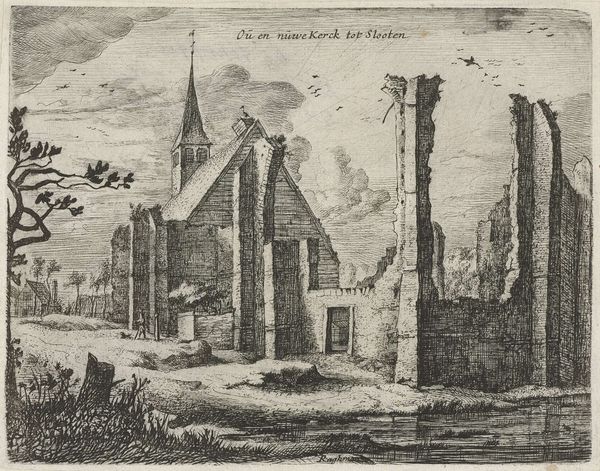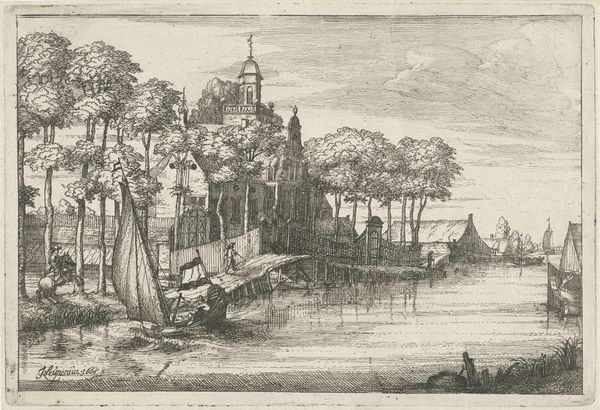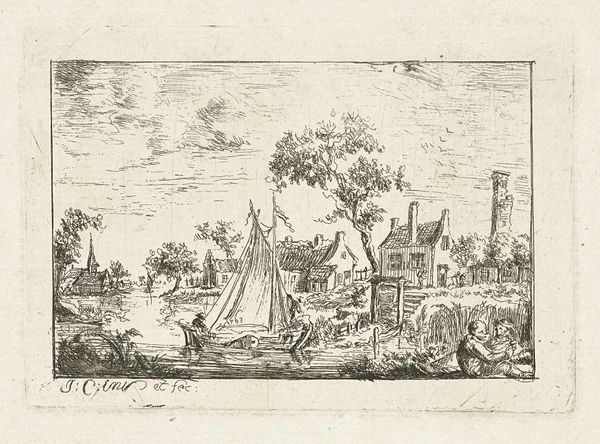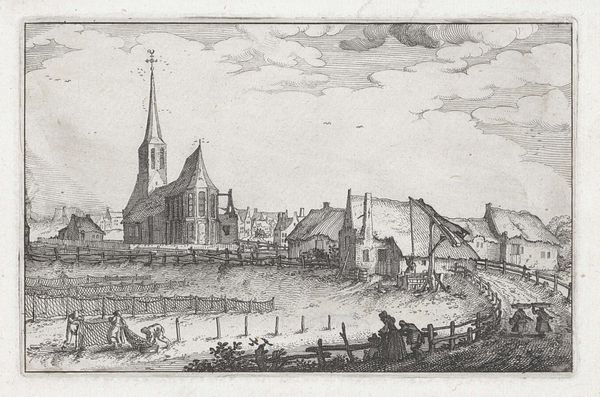
drawing, print, etching
#
drawing
#
dutch-golden-age
# print
#
etching
#
landscape
#
river
Dimensions: height 74 mm, width 96 mm
Copyright: Rijks Museum: Open Domain
Lucas van Uden’s "Village on a River," was made using etching, a printmaking technique with a rich social history. The artist would have coated a metal plate with wax, then scratched an image into the wax. When the plate was dipped in acid, the exposed lines would be eaten away. This painstaking process relies on the properties of the materials themselves. The biting strength of the acid, the receptivity of the wax, the pressure of the artist's hand - all of these contribute to the final image. Prints like this one are multiples. They speak to the rise of a middle class audience, keen to consume images, and therefore reflective of the growing commodification of culture during Van Uden's time. The relatively low cost of the final product suggests that the value was in the skilled labor of the artist. Thinking about materials and processes, we recognize the vital contribution of craft to art history.
Comments
No comments
Be the first to comment and join the conversation on the ultimate creative platform.

